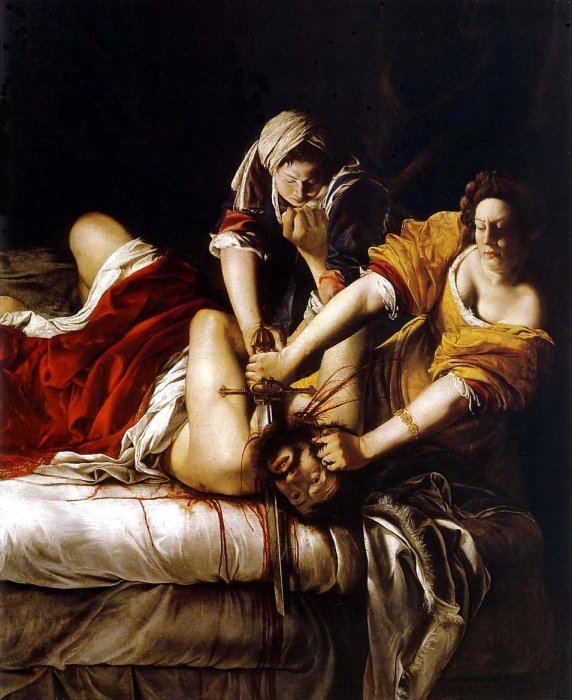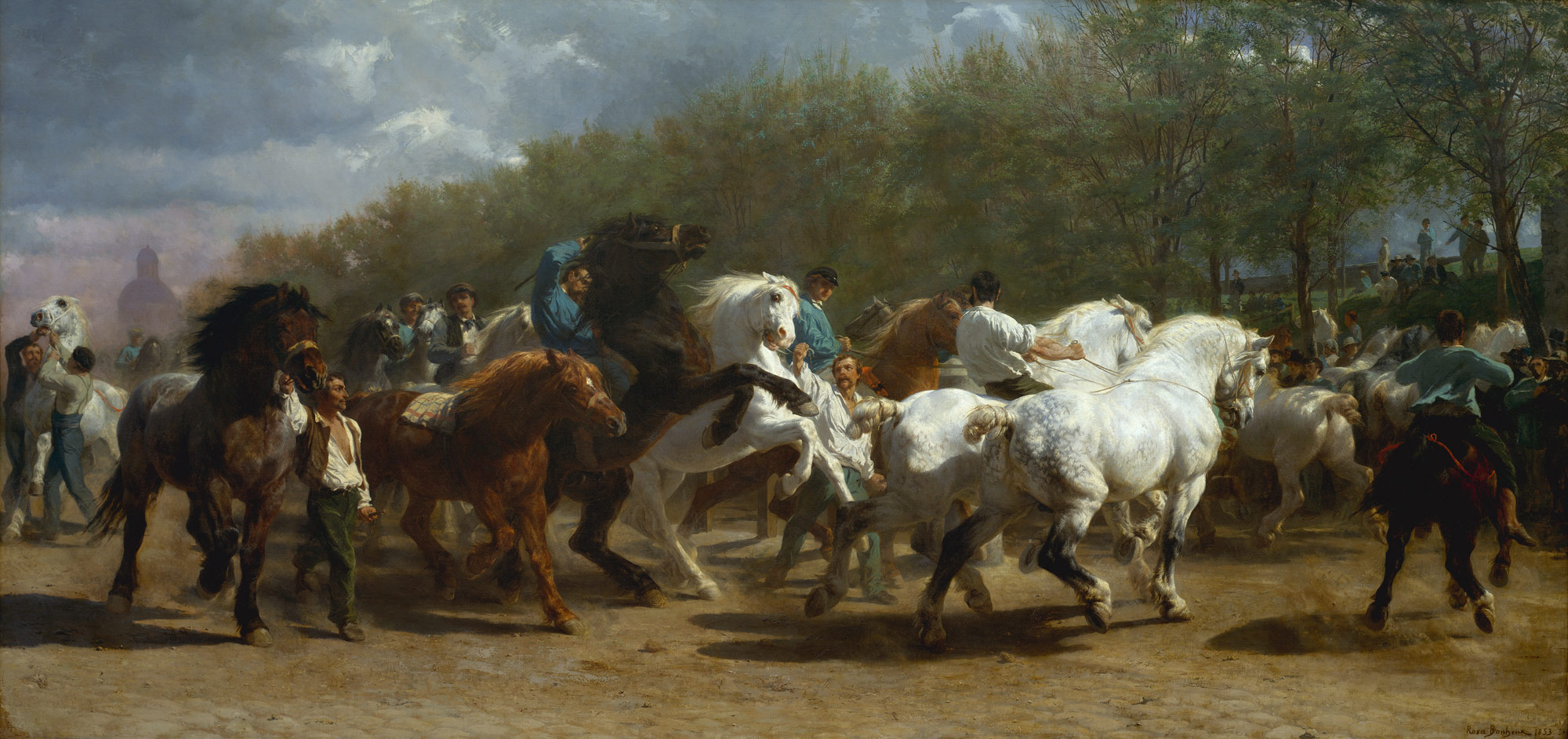 | |
|
 | |
| Artemisia Gentileschi, Judith Slaying Holofernes, c. 1620 |
By the 19th Century, many women became established and traveling artists, their work becoming well-known and exposed in the western world. They also took advantage of new technology at the time, "like the railroad and steamship--to leave home" (47, Guerrilla Girls). There was also the invention of the camera, and "Photography was great for women artists: because it was brand new, there was no canon for them to be excluded from" (47, Guerrilla Girls). More opportunities for women artists arose, and they jumped at the chance to make themselves successful. Some, like Rosa Bonheur, dressed like males in order to push themselves further in the art world, making their artwork recognized and appreciated, accepted by many.
 |
| Rosa Bonheur, The Horse Fair, 1887 |
Slowly, but gradually, women's roles shifted from the image of a subservient female to a female who could stand on her own and make a career for herself through art. They possessed the skills and eventually the power to create a rift (no matter how small) in the art world for women to fit in and strive to flourish. No longer are they "women of the house", staying at home, and expected to raise children with no goals in life. No longer do they allow themselves to be depicted only as a subject to men and their perverse ideals of how a women should look in a painting. From the Middle Ages up until the 19th Century, Women have actively changed and rebelled against the "only role" that they were expected to follow.
Works Cited
Chadwick, Whitney. Women, Art, and Society. New York, NY: Thames and Hudson, 2002.
The Guerrilla Girls' Bedside Companion to the History of Western Art. New York: Penguin, 1998. Print.
No comments:
Post a Comment